


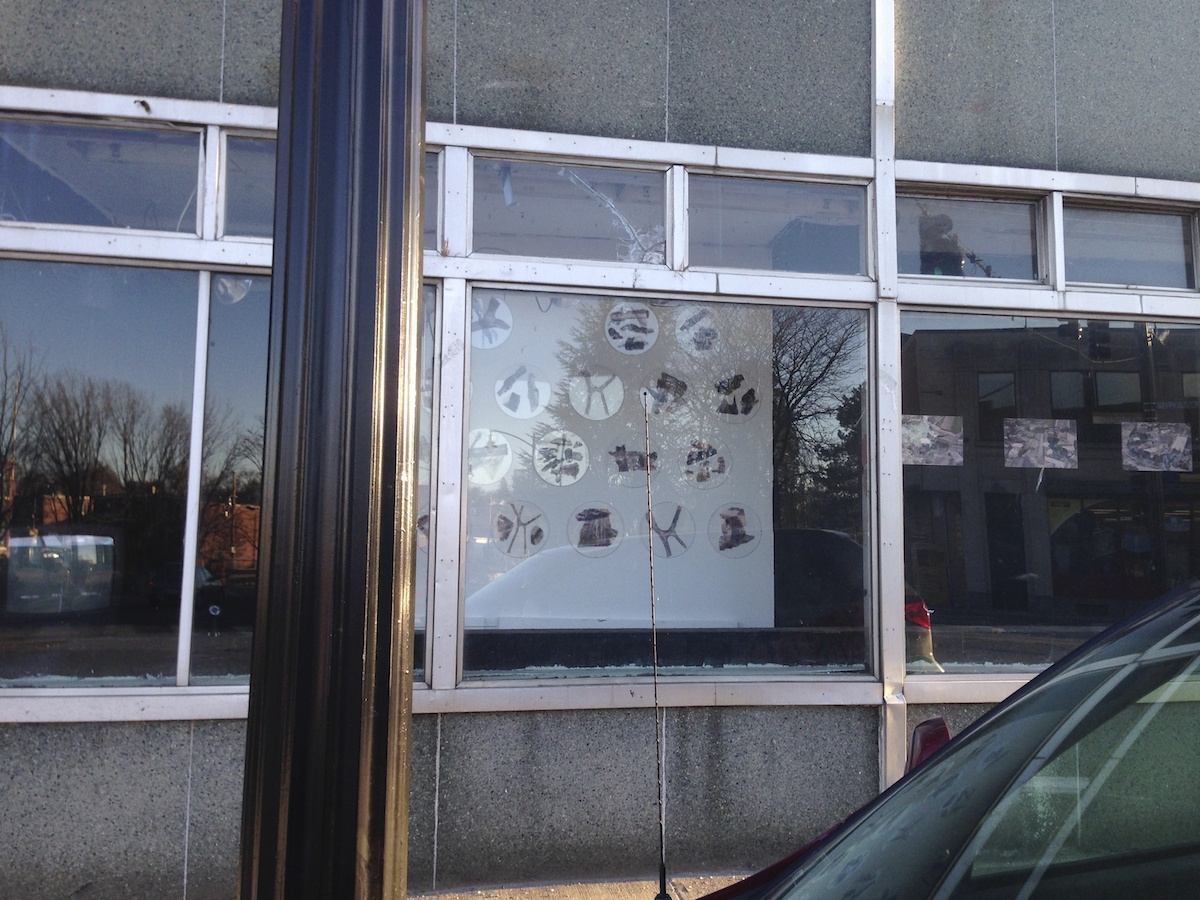
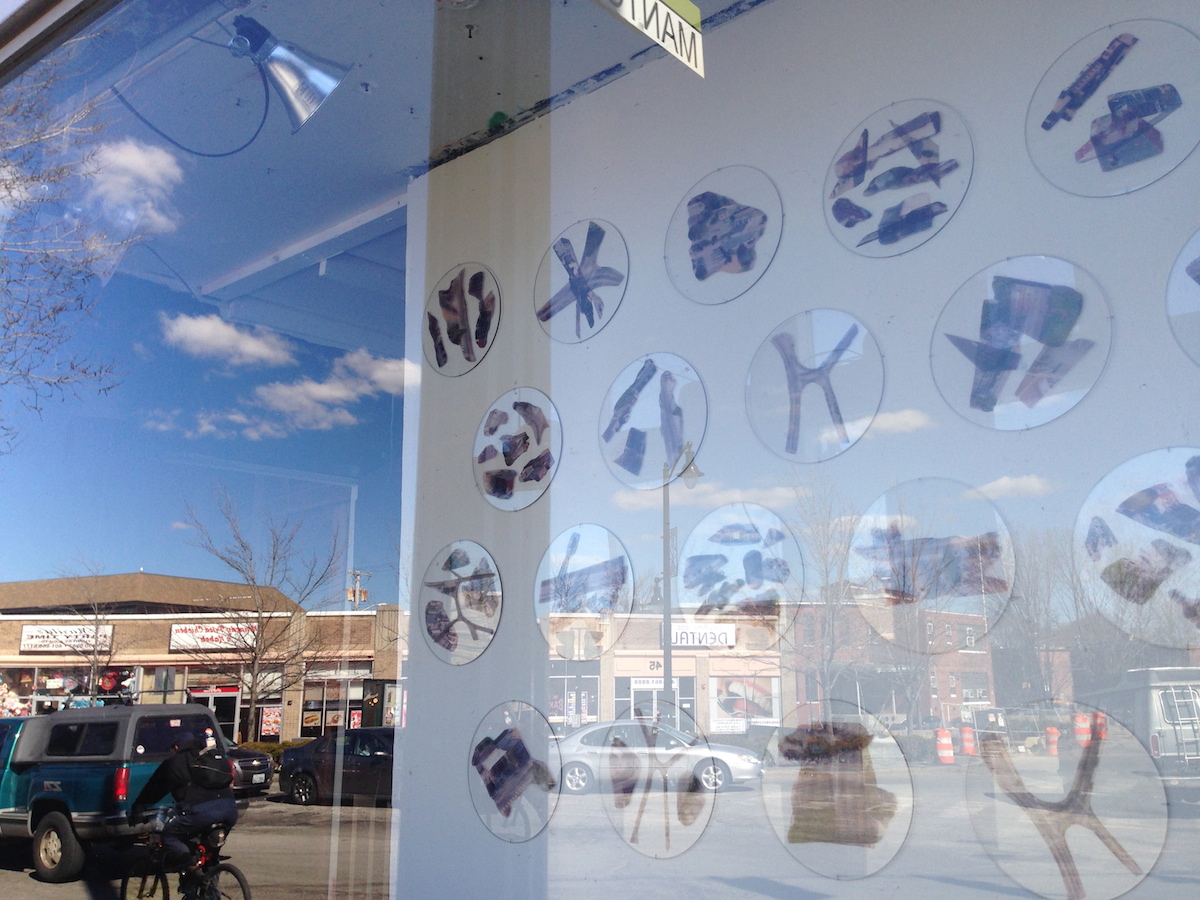
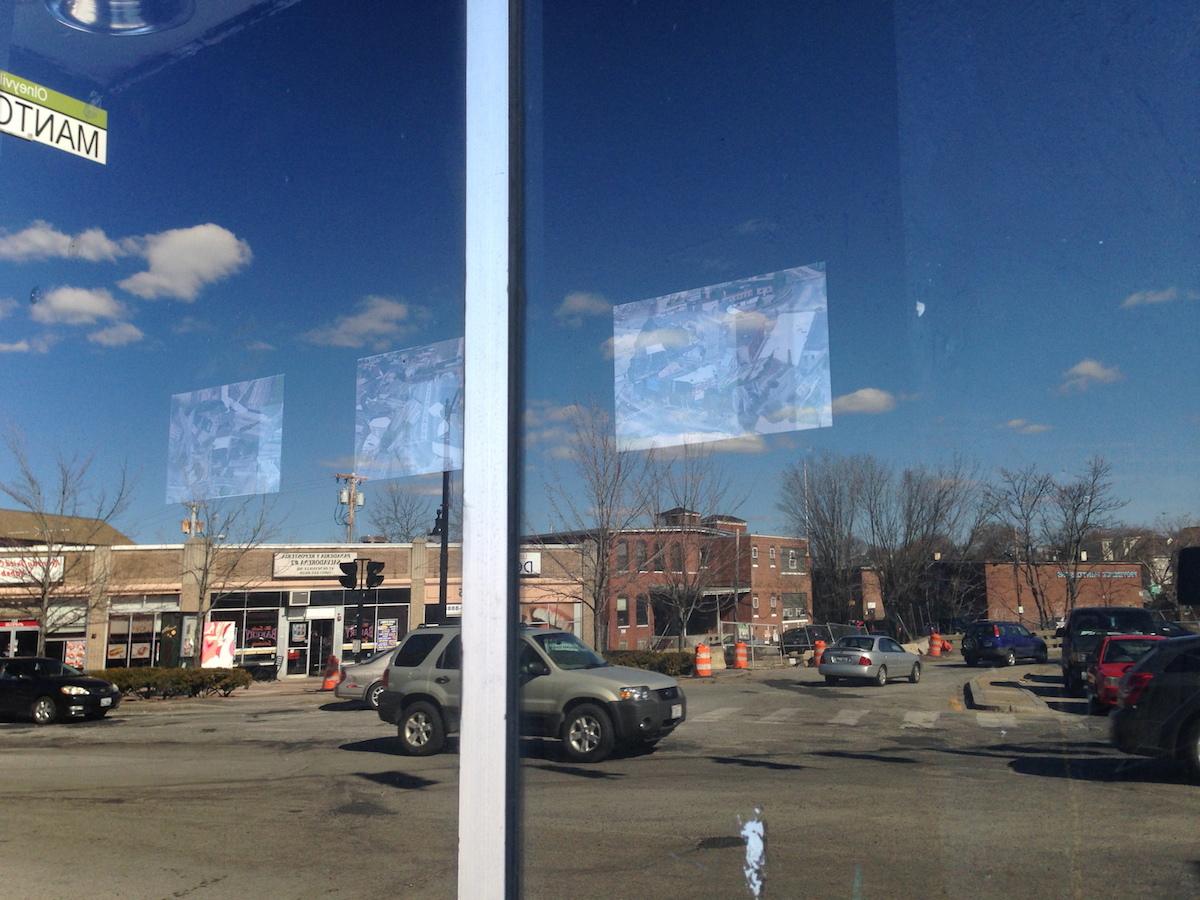
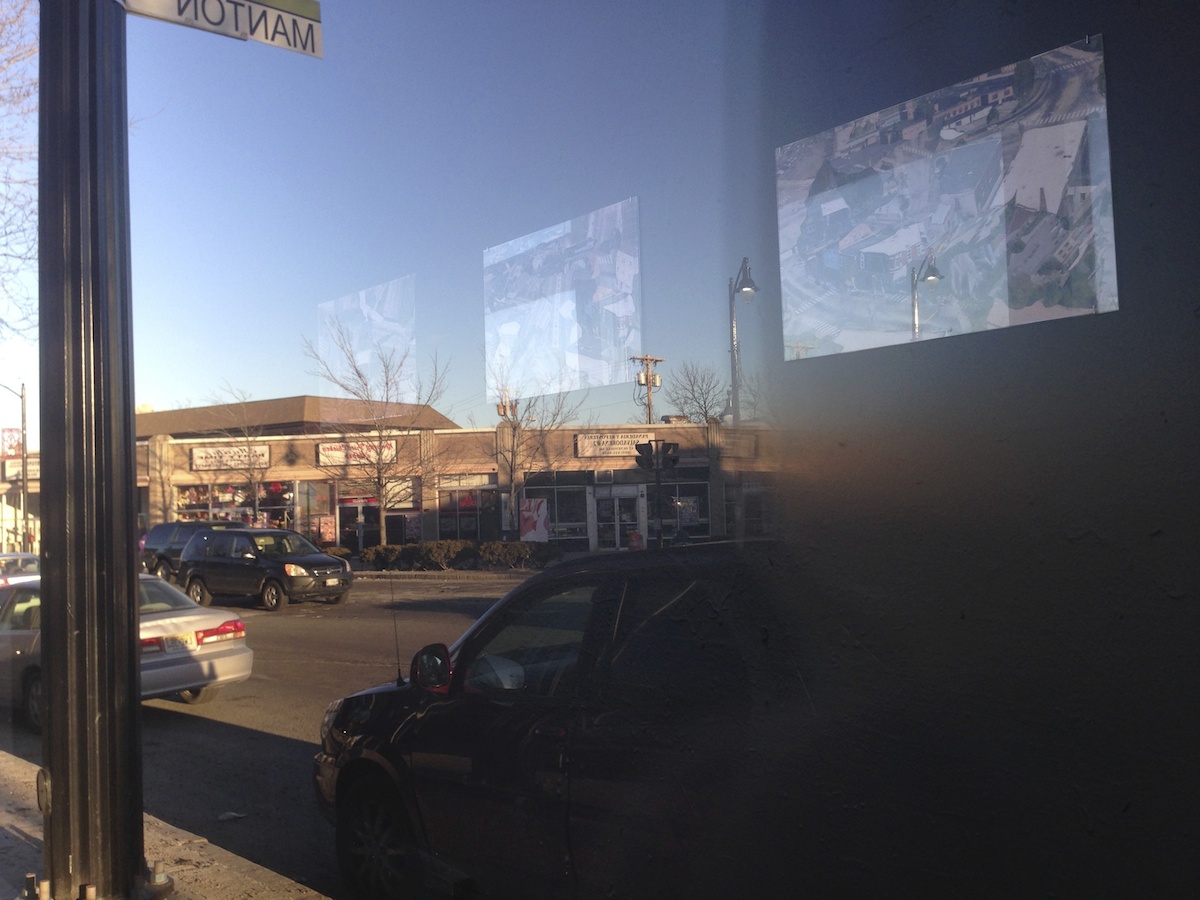
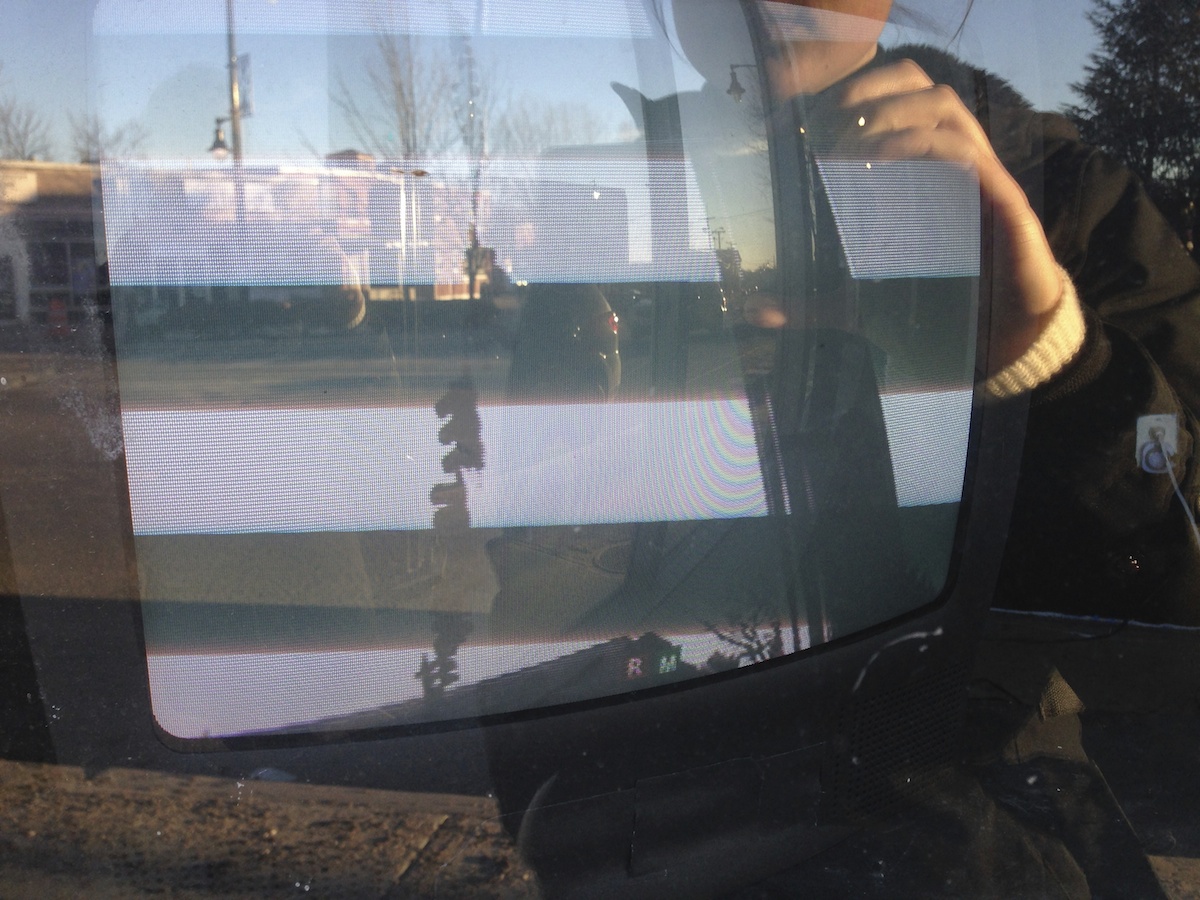
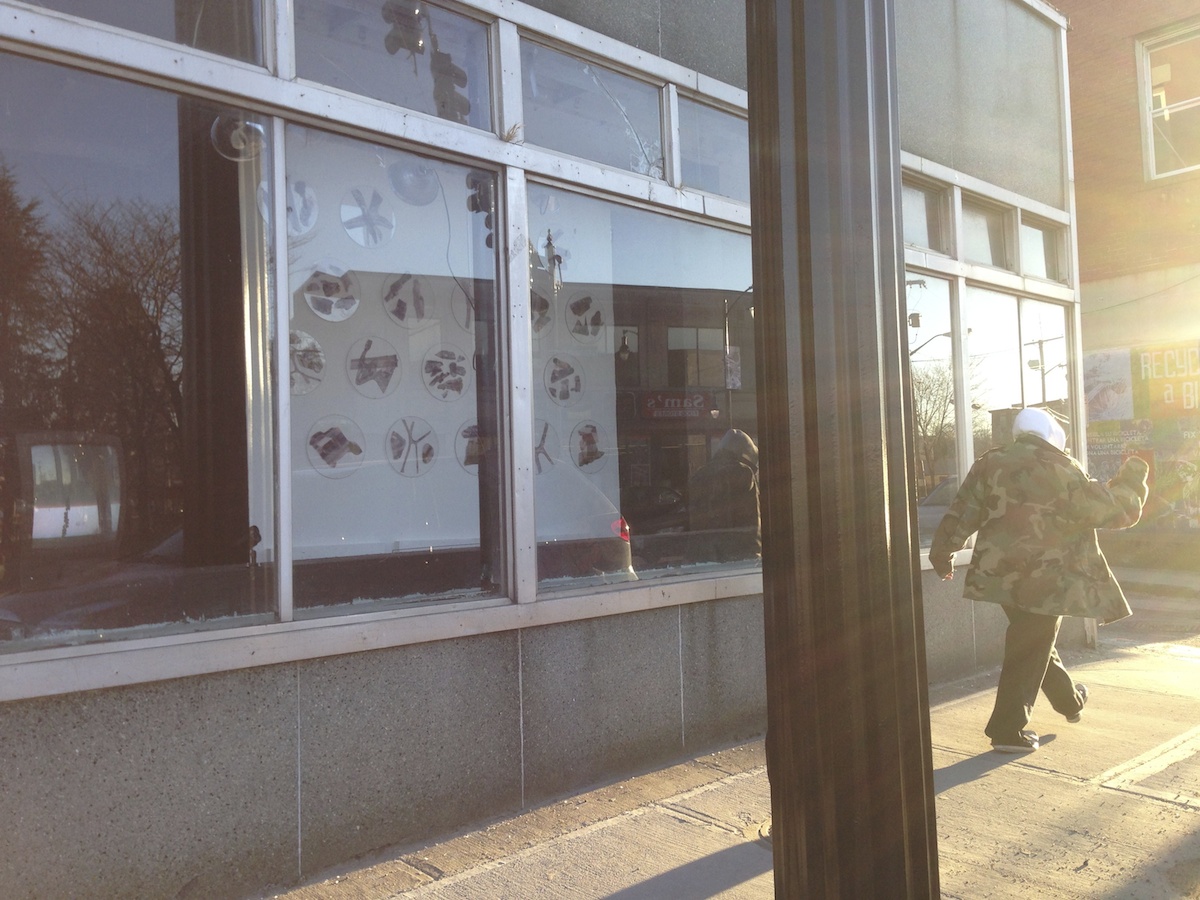
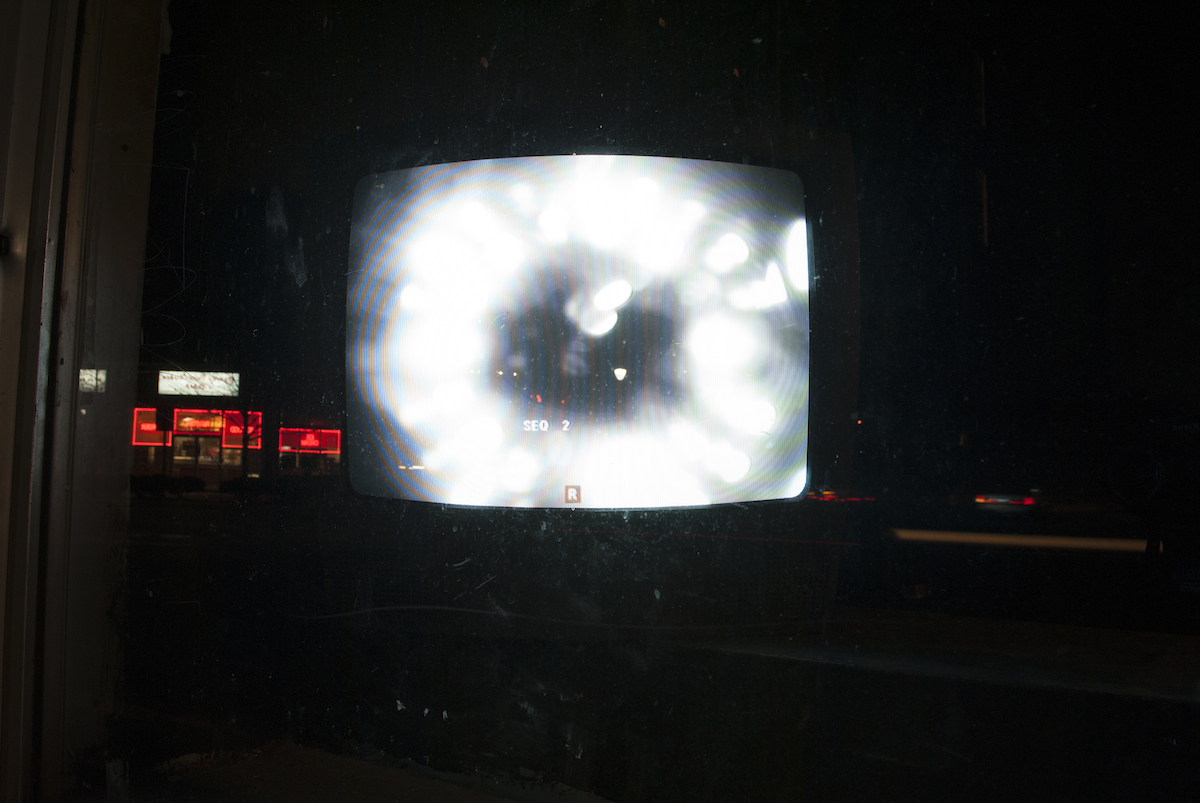
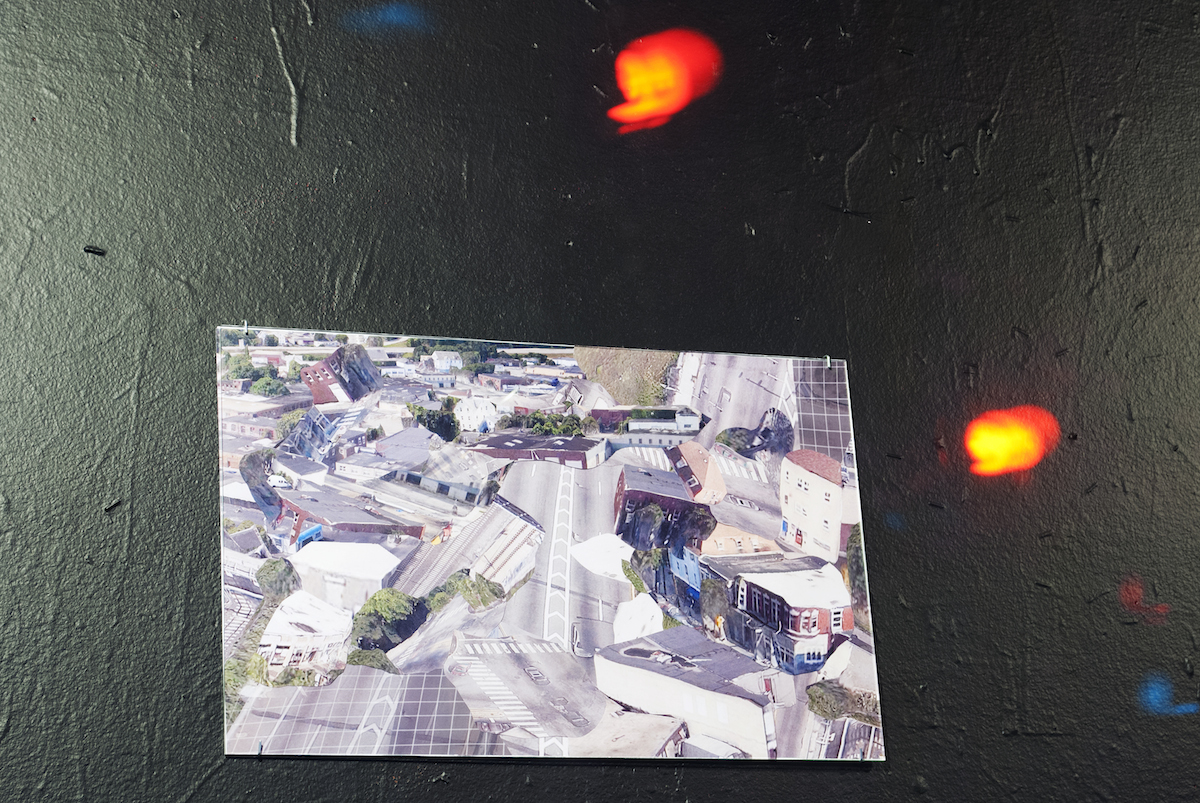
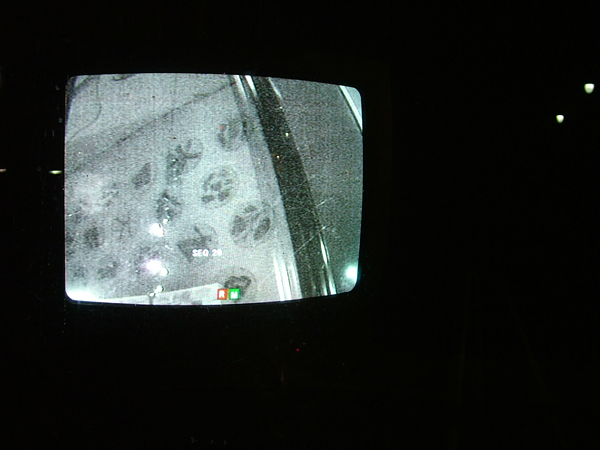

Traffic Study: Eyes & Ears on Olneyville Sq.
Install views, photo & collage, audio - Olneyville, RI (2014)
Notes from an essay on "Traffic Study":
In my most recent piece, Traffic Study: Eyes and Ears on Olneyville Sq., I collected field recordings from a month-long storefront window installation in an old industrial neighborhood in Providence, Rhode Island. It's a difficult location. The window gallery itself is dilapidated and in the middle of a busy, car-centered intersection—it is mostly visible in transit, unless you happen to walk by and pause for a moment. The sounds here are loud machine sounds made by cars, buses, and trucks. They are sounds in motion—songs playing out of car stereos, conversations that zip by, people laughing.
In an effort to find an appropriate visual language for this installation, I attempted to follow similar methods with images that I have used in my work with sound. I created a series of photo collages from Google Maps images of the immediate landscape—comprised of screenshots of the frighteningly real but wonderfully glitched view of our streets and buildings from a bird's eye, or a pedestrian view. These collages were displayed in a storefront window along with live video feeds from LED surveillance cameras, some pointing out to the street and some pointing in at themselves—the electric eye staring back at itself. To the passerby, what at first appears to be an incidental assortment of abstract shapes and patterns reveals itself to be collaged images of satellite pictures of the neighborhood, overlaid with the natural reflections of the window. It was my hope that these images would affect the viewer as they moved through this space, offering an alternate perspective or interpretation of a familiar place—revealing the tenuous and often banal systems that structure our movement through public space.
While there was no “sound” to the installation itself, I used the window gallery and its environs as a site to collect material for an ongoing composition. The sound-material was all gathered here—on the stoop, on walks, inside moving and parked cars, inside neighboring businesses, and appropriated from mix CDR's bought at the convenience store across the street. As a way to give form to this material, I took cues from some of the structural elements of the intersection—using the changing colors of traffic lights as a time-code for audio edits, and limiting recordings to the duration of a drive through the square. By broadcasting (and re-recording) these initial recordings back onto the site— usually through my car stereo— I found new points of connection, through audition, within these hybridized iterations. Recordings of bits of song and traffic collide with actual car-stereos playing similar songs, and a new sound event is created (and is captured, catalogued, and re-played).
As I listened to these recordings, over and over again, it affected the way I heard things in my city—as a pedestrian, a bicyclist, or as a driver or passenger in a car. Sometimes, when I was walking along, or driving through town, I would hear variations of these recordings—a continuation of my piece?—playing in the background. Material that I had appropriated for my work—bits of Reggae-ton, public transit buses, idle chatter, sirens, car horns—sounded back to me in surprising ways. For weeks, I couldn’t drive through town or wait at a crosswalk without thinking about the odd time structures that are imposed on us and how we take them for granted to safely deliver us from here to there. I imagined presenting my work to some dumbfounded panel at a meeting for traffic safety and neighborhood planning, as if it contained some practical instructions for future development.
In June 2014, a version of this piece was re-installed in Bard Hall, in Annandale-on-Hudson, NY.
This version took the above audio and spatialized it for 3-channel playback. There was also a parked car, outside the schoolhouse, playing the above stereo mix from its stereo, which was the same car - a Honda Accord - that was used for the sound gathering in March (see above). I elected to only use found objects to display the photos and collage from the previous exhibit. This included traffic cones, a tabletop, a piano stool, and a glass display case.



